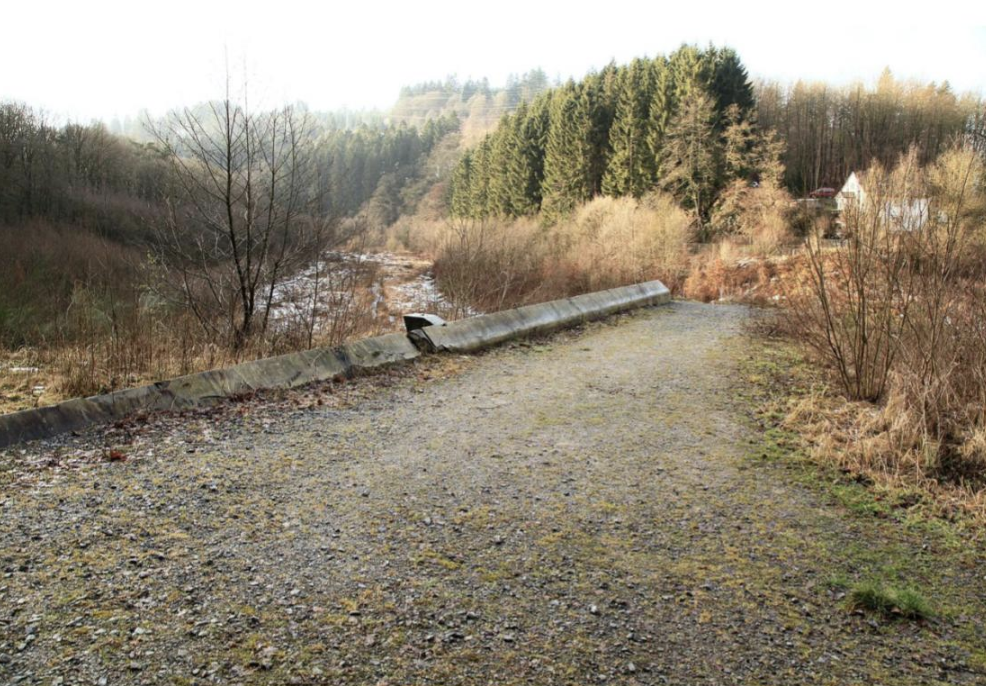The Untere Herbringhauser Dam (Lower Herbringhauser Dam) was the second dam in Germany to be removed.
The dam was situated in Bergisches Land, a low mountain range in the state of North-Rhine Westphalia, and located on the Herbringhauser Bach (Herbringhauser Stream) south of Langerfeld, shortly before the Bach flows into the the Wupper River.
History
The Lower Herbringhauser Dam was a relatively small dam built to provide additional water storage for the larger Upper Herbringhauser dam. The upper dam had no capacity to store drinking water and the extra water in the reservoir of the lower dam was pumped back up into the upper dam to supply potable water to the nearby city of Wuppertal.
The lower dam was built in 1926/27 and put into operation in 1928. The hamlet of Hilgershammer containing several houses and their inhabitants had to make way for its construction. The barrier structure was a rock-filled dam with a concrete core. At completion, it was 19.5m high above the valley bottom and 103m wide. When at full capacity, its reservoir was 200m in length, 197m deep and had a surface area of 4 ha. It was able to store 0.18 million m3 from a catchment area of 9.2 km2.






